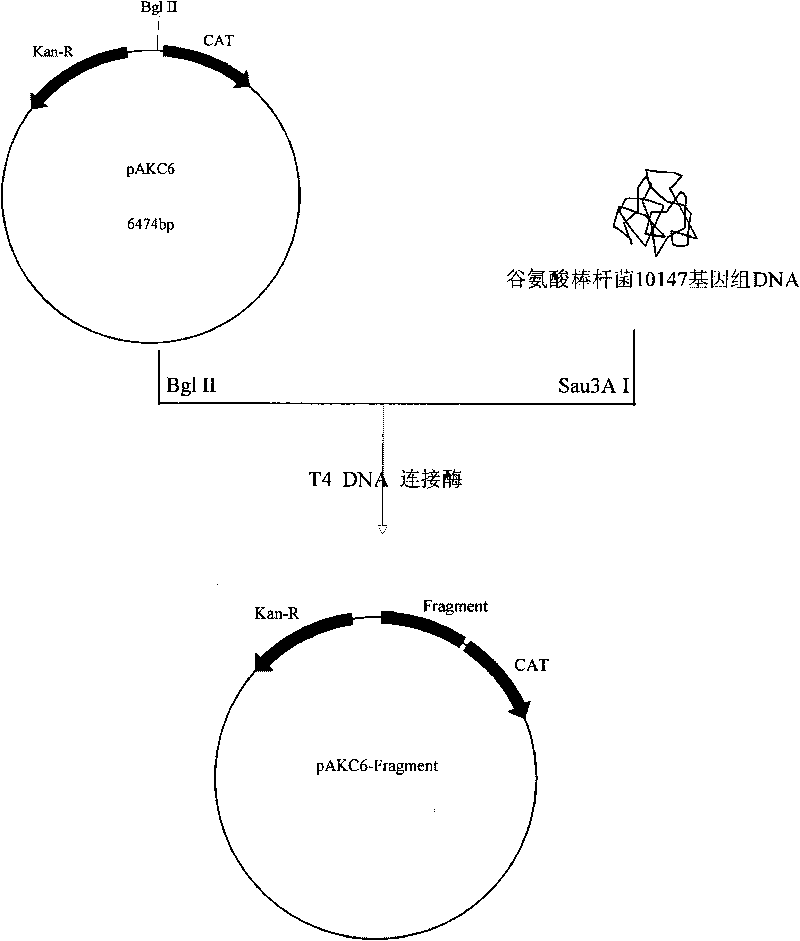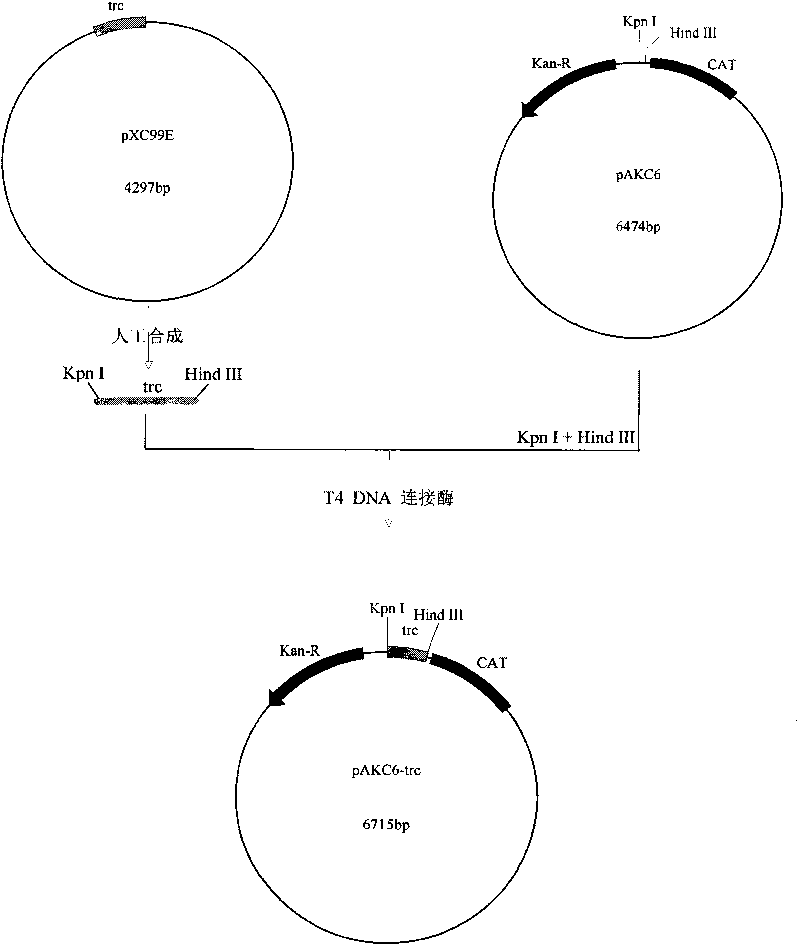Promoter from corynebacterium glutamicum and application thereof
A technology of promoter and coryneform bacteria, which is applied in the biological field and can solve the problems of promoter leakage, limited application, difficult for inducer to pass through coryneform bacteria, etc.
- Summary
- Abstract
- Description
- Claims
- Application Information
AI Technical Summary
Problems solved by technology
Method used
Image
Examples
Embodiment 1
[0033] Embodiment 1, obtaining the DNA fragment with promoter activity
[0034] 1. Cultivate Corynebacterium glutamicum 10147 and extract genomic DNA
[0035] 1. Culture of bacteria
[0036] Pick Corynebacterium glutamicum 10147 (influence of multiple conditions on transformation efficiency in coryneform bacteria electric shock transformation Shen Tianxiang et al. Bioengineering Journal 11 (3): 245-2791995) (this bacterial strain can be obtained in Institute of Microbiology, Chinese Academy of Sciences, See the letter of guarantee for details) A single colony was inoculated in a test tube of 3ml of LB medium, placed on a shaker at 30°C at 300rpm for overnight culture, and the culture solution was used as the seed solution. Take 400 μL of the seed solution and inoculate it into a Erlenmeyer flask with 30 ml of LB medium, and place it on a shaker at 30°C at 300 rpm for overnight culture.
[0037] 2. Extraction of genomic DNA of Corynebacterium glutamicum 10147
[0038]Centrif...
Embodiment 2
[0042] Example 2, detection and analysis of promoter fragments
[0043] 1. DNA sequence determination of promoter active fragment
[0044] The plasmid DNAs of the 30 active fragments with promoter function in Example 1 (two) were extracted, and the DNA sequences of the promoter active fragments were determined using the artificially synthesized primer SEQ ID NO: 3 respectively, and 30 DNA sequences were obtained. The promoter sequence involved in this patent is SEQ ID NO:1.
[0045] 2. Determination of total protein content
[0046] 1) Preparation of crude enzyme solution
[0047] The DNA fragment shown by the sequence SEQ ID NO:1 was prepared.
[0048] The fragment was ligated with the promoter detection vector pAKC6 treated with endonuclease Bgl II, and the calcium chloride method was used (Sambrook J, Fritsch E, Maniatis T Molecular Cloning Experiment Guide. Jin Dongyan, Li Mengfeng, etc. translation. Second Edition . Beijing: Science Press, 1989) into Escherichia coli ...
PUM
 Login to View More
Login to View More Abstract
Description
Claims
Application Information
 Login to View More
Login to View More - R&D
- Intellectual Property
- Life Sciences
- Materials
- Tech Scout
- Unparalleled Data Quality
- Higher Quality Content
- 60% Fewer Hallucinations
Browse by: Latest US Patents, China's latest patents, Technical Efficacy Thesaurus, Application Domain, Technology Topic, Popular Technical Reports.
© 2025 PatSnap. All rights reserved.Legal|Privacy policy|Modern Slavery Act Transparency Statement|Sitemap|About US| Contact US: help@patsnap.com



